You will have the possibility of a visit to a Distillery or to a Ghemme Artisan Cellar, in the heart of the Novarese Hills, an ancient area for the production of fine wines and grappa.
The Nebbiolo wine, native of the territory of Alto Piemonte, gives nectars of great finesse, recognized by enthusiasts as the most enduring in the world. The labels Ghemme DOCG, Gattinara DOCG and the Grappa di Nebbiolo are the great evidence!
Telephone 0323 31178
e-mail: info@milansperanza.it
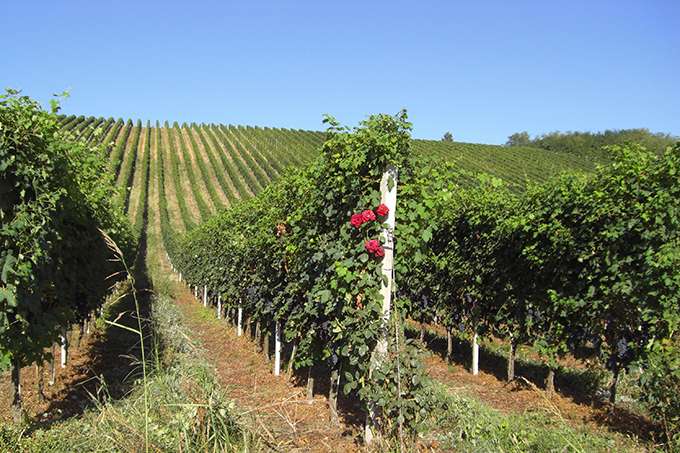
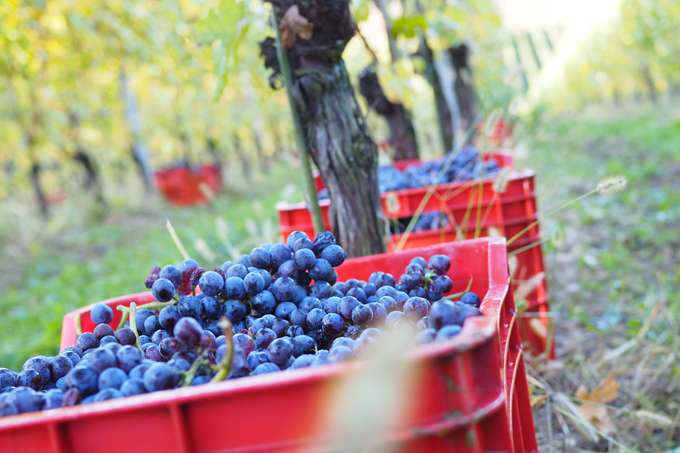
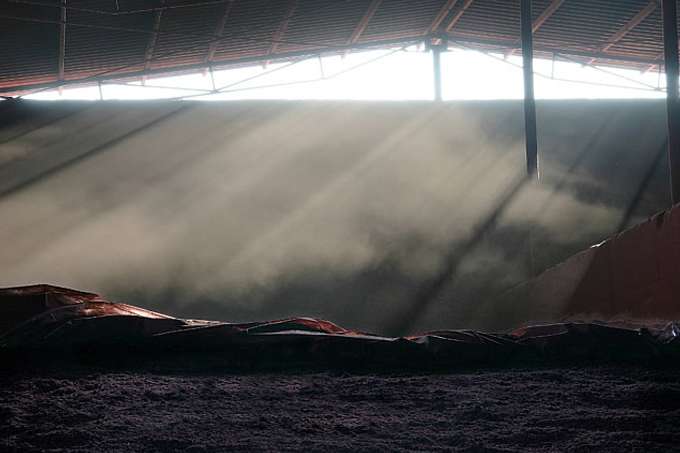
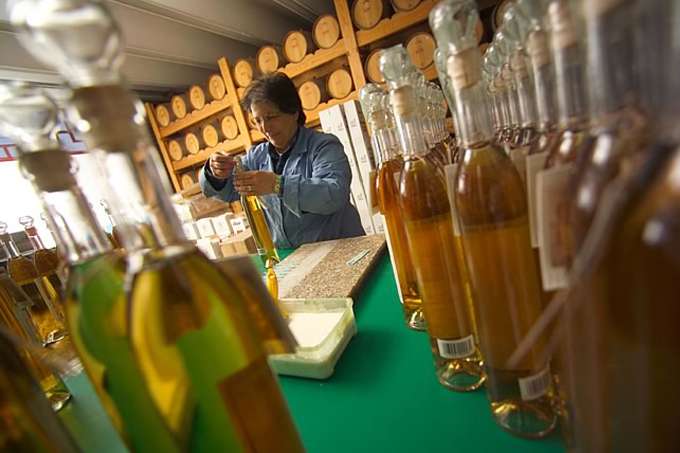
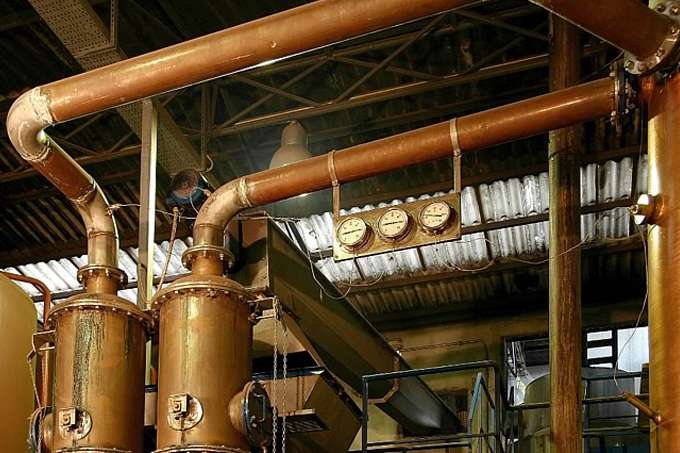
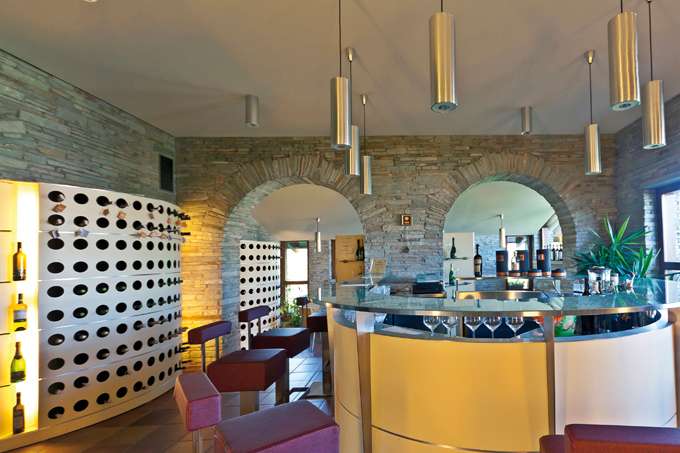
The Lago Maggiore Express offers an unforgettable train and boat trip. The excursion can be joined at various locations. Special one-day and two-day tickets are available.
The excursion takes you not only through Italy but also through the Ticino region in the southern part of Switzerland. For one hour and a half , the Centovalli and Valle Vigezzo railways take you through wild and romantic scenery, punctuated by vertiginous bridges, streams of the purest water, vineyards, chestnut woodlands and villages perched on steep slopes.
The three-hour boat trip across Lake Maggiore allows you to admire the Borromean islands, the castles of Cannero, the Brissago islands and fascinating shorelines dotted with picturesque towns and villages.
The excursion gives you the opportunity to visit not only quaint villages but also famous destinations like Stresa, Ascona and Locarno.
By booking in advance it is possible to have lunch on board.
HOW TO GET THERE
A26 toll motorway going in the direction of Gravellona Toce, then depending on where you started from, A-road no. 34 along Lake Maggiore, A-road no. 33 “Sempione” or road 337 of Valle Vigezzo
FURTHER DETAILS
Access:
April and May: Thu, Fri, Sat and bank holidays
From June to September: every day. Closed on Wednesday
19 September – 16 October: Fri, Sat and bank holidays
CONTACT
Name
Lago Maggiore Express
Email
infomaggiore@navigazionelaghi.it
Web site
www.lagomaggioreexpress.com
Phone number
800 551801
The mountain of Mottarone (1491 m), which with its gentle, grassy slopes divides Lake Maggiore from Lake Orta, offers one of the most breathtaking views of the lakes and the distant Alps.
The sight is unique: an uninterrupted 360° panorama from the Ligurian Apennines and the Maritime Alps to the Monte Rosa massif, the Monviso and the high peaks of Switzerland, across the Po Plain, and the unequalled spectacle of seven lakes (Orta, Maggiore, Mergozzo, Biandronno, Varese, Monate, Comabbio).
In 1911 the summit was connected to the centre of Stresa via a historic rack railway, which was later replaced by the present cableway, which starts from Carciano near Stresa.
Mottarone offers hiking enthusiasts a myriad of paths of historical and scenic interest, through mature woods of fir, pine, larch, beech and chestnut, across ancient mountain pastures where animals graze and the meadows are full of the scent of herbs and flowers. The mountain is also of geological interest, with several quarries, mostly of white and pink granite.
In winter it is a major ski centre for the Lake Maggiore area, with a variety of runs, excellent restaurant facilities and equipment hire.
A historical curiosity: on 18 January 1935 the first giant slalom in Italy – an international ski race dubbed “Coppa del Duce” (“The Duce’s Cup”) – was held here.
HOW TO GET THERE
You can reach the top of Mottarone by the “Due Riviere” road from Armeno, or the private “Borromea” road (toll) from Stresa-Gignese. There is also a cableway service leaving from the Lido of Carciano near Stresa practically to the summit (intermediate stop at Alpino).
FURTHER DETAILS
www.mottaroneski.it
www.mottarone.it
The gardens of Villa Taranto in Verbania, between Intra and Pallanza, are known the world over for their great beauty and the huge number of plant species they contain. The result of a labour of love on the part of the Scottish Captain McEacharn in 1931, the myriad of colours and scents the marvellously landscaped garden offers continues to enchant visitors from March to October.
The gardens are landscaped in what is essentially the English style, though there is no lack of Italian features like statues, fountains, ponds, terraces, waterfalls – in short, all the ornamental elements that add some extra magic to this earthly paradise.
Villa Taranto is one of the most important botanic gardens in the world, with thousands of species of trees and flowers from all over the world, planted harmoniously over an area of around 16 hectares, crossed by 7 km of paths and avenues. It is impossible in a few words to do justice to the wealth of colour, scent, and emotional impact: eucalyptus, azaleas, rhododendrons, magnolias, port wine magnolias, maples, camellias, dahlias, tulips, lotus, heathers, dwarf asters, hydrangeas, dozens of tropical plants (including the giant water lily Victoria Amazonica), rare specimens like Dicksonia antarctica (Tasmanian Tree Fern) and Davidia involucrata (Dove Tree).
From spring to autumn there are always flowers in bloom, with “special events” for certain species which are particularly spectacular in their season: the tulip week is in April, dahlias are at their best between July and October. The garden book festival Editoria & Giardini is an occasion for special events in September.
This extraordinary place was the brainchild of the Scottish captain Neil McEacharn, who bought the villa in 1931 with the specific intention of creating the garden of his dreams on the shores of his beloved Lake Maggiore. He named the property after a family ancestor who had been made “Duke of Taranto” by Napoleon. In 1939 Captain McEacharn, who had no direct heirs, decided to gift the whole property to the Italian state, in exchange for permission to be buried in the mausoleum which now stands in the middle of the park.
There is an entrance fee for visiting the gardens.
HOW TO GET THERE
By car: from the A26 motorway, exit for Verbania. Take the Suna/Pallanza by-pass until you come to the new marina; turn right along the lakeside just before the marina. You can also get to Villa Taranto by boat: some of the public service boats stop at the Villa’s pier.
FURTHER DETAILS
Booking:
Optional
Access:
from the end of March to November, everyday
Open hours: from March to September 8.30-18.30 everyday. October and November 9.00 – 16.00.
CONTACT
Name
Ente Giardino Botanico Villa Taranto
Email
entevillataranto@tin.it
Address
Via Vittorio Veneto, 111 – Verbania Pallanza (VB)
Web site
www.villataranto.it/eng/default.aspPhone number
+39 0323 556667
The beautiful, famed Alpinia Botanic Garden is located in the pretty hamlet of Alpino between Stresa and Gignese. Its exceptional view, which sweeps from the Borromean Gulf to the chain of the Swiss Alps, made Alpino a favoured holiday spot from the mid 19th century for the European aristocracy as well as artists who found here inspiration for their work.
The superb Alpinia Botanic Garden was started in 1934 during the Fascist period, under the name of Duxia, by Igino Ambrosini and Giuseppe Rossi. The garden, at an altitude of 800 metres, is extremely interesting to naturalists due to its huge, varied collection of botanic species from the Alps and the Alpine foothills, as well as from the Caucasus, China and Japan. The most valuable plants in this spectacular botanic garden are specimens of trees and shrubs, some of them rare.
The garden has recently been extended to include a wetland area for aquatic plants. There is a spring of oligomineral water near the entrance to the garden.
HOW TO GET THERE
By car: from the A26 exit at Brovello Carpugnino; continue in the direction of Gignese and follow the signs for Alpino-Mottarone.
By train: the nearest railway station is Stresa.
FURTHER DETAILS
Access:
1 April/ 31 October: 9.30 am – 6 pm
CONTACT
Name
Giardino Botanico Alpinia
Email
info@giardinoalpinia.it
Address Piazzale Lido, 8 – Stresa (VB)
Web site
www.giardinoalpinia.it/home_eng.htm
The Park of Villa Pallavicino in Stresa is a favourite tourist attraction on Lake Maggiore, a paradise of flowers and animals to delight visitors of all ages.
The Park was originally the idea of the Neapolitan statesman Ruggero Bonghi, who fell in love with Lake Maggiore and decided in 1855 to purchase the land and build a small house for himself. In 1862 the family of the Marquises of Pallavicino acquired the property and began to improve it, extending the grounds, building drives suitable for carriages, embellishing the park with statues and transforming the modest house into the opulent 19th century Neoclassical mansion which still graces the hillside. In 1952 Marchioness Luisa Pallavicino completed the family project with the addition of a zoo with animals from every corner of the globe.
Now thousands of tourists visit the Villa’s extensive 16 hectare-park between March and October.
Broad lawns, shady avenues and open spaces planted with roses, oleanders, magnolias, daffodils, azaleas, and rhododendrons blend perfectly with the majestic, mature trees of the wooded areas. The zoo with its more than 40 species of animals from all over the world is the major visitor attraction: black swans, rare species of duck, grey crowned cranes, deer, silver pheasants, cervi-capra, zebras, Bennet kangaroos, and peacocks add their life and colour to this natural stage looking out over Lake Maggiore and the surrounding mountains.
The park (admission fee) has a restaurant, bar, souvenir shop, children’s play area and several picnic areas.
Open from March to October, the Park of Villa Pallavicino is the perfect place for a day out in the open air with all the family!
HOW TO GET THERE
By car: from the A26 motorway exit at Carpugnino or Baveno. When you get to Stresa lakefront, turn right along the lakeside road towards Belgirate. Villa Pallavicino is just outside Stresa on the right. Leave your car in the car park on the left.
By train: the nearest station is Stresa.
CONTACT
Name
Park of Villa Pallavicino
Email
direzione@parcozoopallavicino.it
Address Via Sempione Sud – Stresa (VB)
Web site
www.parcozoopallavicino.it
Phone number
+39 0323 31533
Fax
+39 0323 31533
Isola Pescatori (Fishermen’s Island), or Upper Island because of its more northerly situation than the other islands in the Gulf, is the most picturesque of the Borromean Islands, as well as the only one to be permanently inhabited. Distinctive features of its ancient little village are narrow lanes with characteristic two-storey houses, with long balconies traditionally used for drying fish; the island’s inhabitants earn their living mainly by fishing and tourism.
Its unmistakable skyline is punctuated by the pointed spire of the Church of San Vittore, which rises above the red roofs of the houses; its shore is always occupied by the little boats of its fifty residents. It becomes even more atmospheric in the evening, when the whole island is discreetly lit up, a living picture reflected in the calm waters of the lake.
On the island are little boutiques and renowned restaurants where you can eat freshly caught fish – a culinary pleasure for the humble and the famous alike. An anecdote recounts that in 1835 Mussolini and the other participants in the Stresa Conference came to the island one day on a whim, to try the area’s best-known dish of perch.
Once on the island you can’t miss the Church of San Vittore, a national monument, which still has its original apse with a single lancet window dating from the 11th century. Inside is a 16th century fresco of Sant’Agata, some 17th century paintings, and wooden busts of the apostles Peter and Andrew, the patron saints of fishermen.
HOW TO GET THERE
You can reach the island by the public service boat or private launch from the boat stations of Stresa, Arona, Verbania and Baveno.
CONTACT
Name
Gestione Governativa Navigazione Laghi – Lago Maggiore
Email
infomaggiore@navigazionelaghi.it
Address infomaggiore@navigazionelaghi.it
Web site
www.navigazionelaghi.it/home_e.html
Phone number
+39 0322 233200
Isola Madre is the largest and perhaps most characteristic of the three islands in the Borromean Gulf. Its palace displays furnishings from the historic residences of the Borromeo family, and contains some beautiful rooms, such as the Dolls’ Room, the Room of the Seasons and a room devoted to the Puppet Theatre.
The atmosphere of this enchanting place is magical; its immense garden of rare trees and exotic flowers, where peacocks and pheasants wander and budgerigars fly in freedom, has something of the fascination of a tropical land. The English-style garden of Isola Madre, landscaped in the early 19th century in a space of almost eight hectares, displays a flora which is a continual surprise and which is hard to find in other places.
It is famous for the amazing spectacle of its azaleas, rhododendrons and camellias in flower, as well as its pergolas of ancient wisteria. The largest specimen in Europe of Kashmir Cypress, superb lime and lemon trees, a marvellous collection of hibiscus, and a Gingko Biloba, are all found here.
Isola Madre leaves you with a memory of manicured lawns, expertly tended trees and flowers, and beautifully laid out interiors, of a quality to please the most exacting visitor.
The public boats call at the island, leaving from Stresa, Baveno, Verbania and Arona.
HOW TO GET THERE
By car: from the A26 exit at Stresa-Baveno.
By train: Stresa railway station.
Take the public service boat to Isola Madre from Stresa, Verbania, Baveno or Arona
FURTHER DETAILS
Booking:
For guided tours in the Palace.
Price
€ 11,00
Kids from 6 to 15: € 6,00
Guided tours: booking required
€ 45,00: groups
CONTACT
Name
Borromeo Turismo
Email
info@isoleborromee.it
Web site
www.borromeoturismo.it
Phone number
+39 0323 30556
Whoever comes to Lake Orta is drawn irresistibly to its most beautiful village: the ancient burgh of Orta San Giulio, which faces the spectacular Island of San Giulio, a short distance away. The distinctive appearance of the burgh derives from the Renaissance and Baroque art which is a feature of its fine townhouses and beautiful gardens. Attractions include the magnificent mansions of Villa Perone and Villa Crespi, as well as the Palazzo della Comunità, which once hosted the “Consiglio della Riviera”.
The little Island of San Giulio is dominated by its Romanesque basilica, the bishop’s palace and the Benedictine abbey. You can reach it by a short crossing by boat or motor launch. Legend has it that the island, which lies not more than 400 metres from the lakefront of Orta, was once a bare rock inhabited by snakes and terrible monsters, until the day in 390 when San Giulio landed, crossing the lake on his cloak and guided in the storm by his staff. Here the Saint founded a church, which he later chose to be buried in, and transformed the island into a centre of evangelization of the whole area. After landing, you go up a short flight of steps leading to the atmospheric Romanesque Basilica, the island’s main attraction.
From the church you can walk along the narrow street that goes round the whole of the island: the “way of silence and meditation”, in an evocative blend of spirituality and architecture. Exploring the lanes you will come across the 19th century Bishop’s Palace, and the Mater Ecclesiae Benedictine Abbey, a convent of cloistered nuns who live permanently on the island, devoting their days to prayer, study, restoring valuable old church vestments, making communion wafers and the famous “pane di San Giulio” (St Julius’ bread).
The other buildings on the island, now private residences, were once priests’ lodgings; one of the oldest is Villa Tallone, where concerts of classical music are held every year. A pleasant restaurant with a terrace on the lake and a souvenir shop complete the facilities available to the visitor.
HOW TO GET THERE
By car: from the A26 exit at Borgomanero or Arona.
By train: the nearest station is Orta-Miasino.
You can reach San Giulio Island by public service boat.
FURTHER DETAILS
Navigazione Lago d’Orta
Tel: +39 345 5170005
info@navigazionelagodorta.it
www.navigazionelagodorta.it
Mergozzo is one of the prettiest lakeside villages in the Lake Maggiore area. Picturesquely situated on the shore of Lake Mergozzo, separated from Lake Maggiore due to the continual flooding of the River Toce, the village is a favourite holiday destination from the spring on.
The stone houses huddle close together, separated only by narrow lanes. The central square of the village is dominated by an ancient elm tree: historical documents attest that the tree was growing in the square as many as 400 years ago. Now completely hollow, it has been given the title of a “monumental tree of Piedmont”.
Mergozzo was inhabited in antiquity, as is illustrated by the extensive collections in the Antiquarium museum, which displays finds from the prehistoric and Bronze ages, as well as old tools that were once used to extract and shape the granite from the quarry of Montorfano and the marble of Candoglia.
At Groppole there is an important megalithic complex with two cup marks and a serpentiform gutter. Slightly elliptical in shape, bordered by stone walls and covered by a great serizzo granite boulder, the structure is known as Ca’ d’la Norma and is dated to the Copper and Bronze Ages. The careful arrangement of the supporting boulders, the wide forecourt and the petroglyphs on the outer surface of the covering stone suggest a megalithic burial executed by a community which had reached a stage of considerable organisation.
A number of walks in the countryside start from Mergozzo, such as the “Sentiero Azzurro” (Blue Trail) to the hamlet of Montorfano along a track beside the lake. Mergozzo’s beaches are very popular with visitors and local people alike, and provide facilities like beach volleyball, a playground for children and a bar.
Don’t miss a taste of Fugascine, the delectable cakes baked only in Mergozzo and available in all the village bakeries.
HOW TO GET THERE
By car: from the A26 motorway continue along the dual carriageway in the direction of Domodossola and exit at Mergozzo.
By train: the nearest railway stations are Verbania-Pallanza and Mergozzo.
FURTHER DETAILS
Mergozzo Tourist Office
www.mergozzo.it/it/

